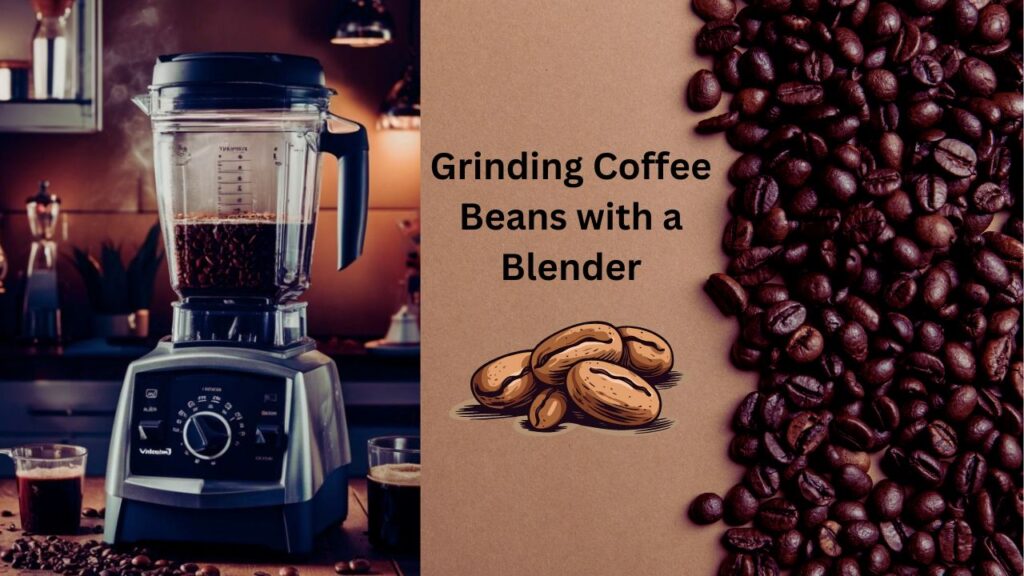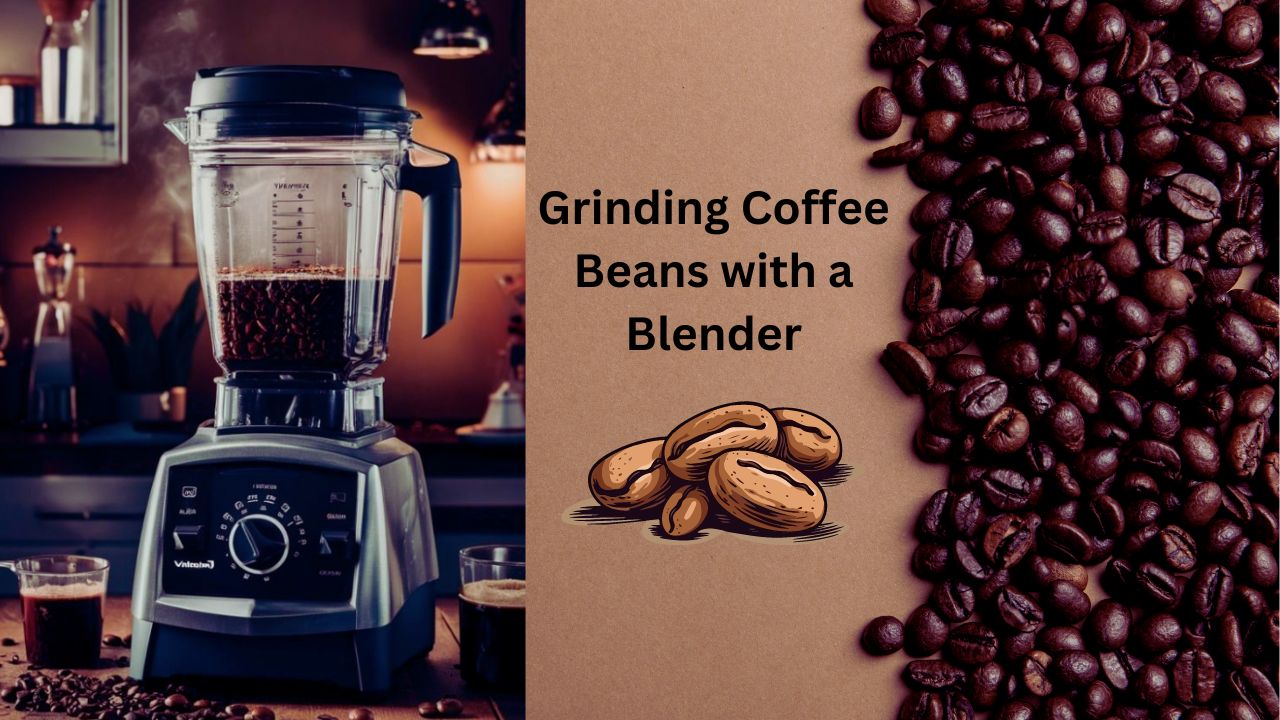
Can I Grind Coffee Beans in a Blender? The Ultimate Guide for Coffee Lovers
The aroma of freshly ground coffee is a morning ritual for millions. But what if you don’t have a dedicated coffee grinder? The question, “can I grind coffee beans in a blender?” often arises. The answer, as with many things in the culinary world, is nuanced. While a blender can technically grind coffee beans, the results may not be ideal, and there are several factors to consider. This article will delve into the pros and cons of using a blender for coffee, providing a comprehensive guide to help you make the best decision for your coffee brewing needs. We will explore the process, the potential pitfalls, and offer tips for achieving the best possible results.
The Basics: Understanding Coffee Grinding
Before we tackle the blender question, it’s important to understand the fundamentals of coffee grinding. The ideal grind size depends on your brewing method. For example, a French press requires a coarse grind, while espresso machines demand a very fine grind. The consistency of the grind is also crucial; uneven grinding results in inconsistent extraction, leading to bitter or sour coffee. A dedicated burr grinder is generally the preferred choice because it offers consistent particle size and prevents overheating, which can negatively affect the coffee’s flavor.
Blender vs. Coffee Grinder: A Head-to-Head Comparison
The primary advantage of a dedicated coffee grinder is its ability to provide a consistent grind size. Burr grinders, in particular, are known for their precision. They crush the beans between two abrasive surfaces, resulting in a uniform grind. Blade grinders, while less precise, still offer a better grind consistency than most blenders. On the other hand, a blender, designed primarily for chopping and mixing, uses blades that spin at high speeds. This can lead to uneven grinding, where some particles are very fine while others remain coarse. This inconsistency often results in a less flavorful cup of coffee.
The speed at which a blender operates also generates heat. This heat can scorch the coffee beans, altering their flavor profile and potentially leading to a burnt taste. A coffee grinder is typically designed to minimize heat buildup. Furthermore, blenders are often not designed to handle the density of coffee beans and can be damaged if used improperly. The noise level is another factor to consider; blenders are generally louder than coffee grinders.
The Blender Grinding Process: A Step-by-Step Guide
If you find yourself in a situation where a blender is your only option, here’s a step-by-step guide to help you get the best results. Remember, this is a workaround and may not yield the same quality as a dedicated grinder.
- Prepare the Blender: Ensure your blender is clean and dry. A clean blender is crucial to avoid contamination.
- Measure the Beans: Start with a small amount of coffee beans. Overfilling the blender will lead to uneven grinding. A good starting point is a quarter to a half cup.
- Pulse, Don’t Blend Continuously: Use the pulse function on your blender. This allows you to control the grinding process and minimize heat buildup. Pulse in short bursts (1-2 seconds) and check the grind frequently.
- Check the Grind: Open the blender and check the consistency of the grind. If it’s too coarse, pulse again. If it’s too fine, you’ve likely gone too far.
- Repeat and Adjust: Continue pulsing and checking until you reach the desired grind size for your brewing method.
- Avoid Overheating: If the blender starts to feel warm, let it cool down before continuing. Overheating can ruin the coffee’s flavor.
Grind Size and Brewing Method: Matching the Grind to the Brew
The grind size is critical for achieving a balanced and flavorful cup of coffee. The brewing method dictates the ideal grind size. Here’s a quick guide:
- French Press: Coarse grind (similar to sea salt).
- Cold Brew: Coarse grind (similar to sea salt).
- Pour Over (e.g., Hario V60): Medium grind (similar to coarse sand).
- Drip Coffee Maker: Medium grind (similar to coarse sand).
- Moka Pot: Fine grind (similar to granulated sugar).
- Espresso Machine: Very fine grind (similar to table salt).
When using a blender, achieving these specific grind sizes can be challenging due to the lack of precise control. It’s essential to experiment and adjust the grinding time and pulsing frequency to get as close as possible to the recommended grind size for your chosen brewing method. Remember that the consistency of the grind is more important than the absolute size.
Tips for Grinding Coffee Beans in a Blender
If you must use a blender to grind coffee beans, here are some tips to improve your results:
- Use Freshly Roasted Beans: Freshly roasted beans will produce a better flavor, even when ground in a blender.
- Start with a Small Amount: Grinding a small amount at a time allows for better control and more even grinding.
- Pulse, Pulse, Pulse: Avoid continuous blending. The pulse function is your friend.
- Monitor the Grind: Open the blender frequently to check the grind consistency.
- Clean Your Blender Thoroughly: Coffee oils can linger and affect the flavor of future blends.
- Consider the Blade Type: Some blenders have blades better suited for grinding than others. Experiment to see which works best.
- Don’t Overfill: Overfilling the blender will result in uneven grinding.
Potential Problems and Solutions
Grinding coffee beans in a blender can present several challenges. Here are some common problems and how to address them:
- Uneven Grind: This is the most common problem. Pulse the blender in shorter bursts and check the grind frequently. You might need to manually shake the blender to redistribute the beans during grinding.
- Overheating: If the blender gets too hot, let it cool down. Overheating can scorch the beans.
- Burnt Taste: This is a sign of overheating. Use shorter pulses and avoid continuous blending. Reduce the amount of beans you grind at once.
- Blender Damage: Blenders are not designed for grinding hard objects like coffee beans. Use the blender cautiously and avoid overfilling it.
- Inconsistent Flavor: Uneven grind size results in inconsistent flavor. Adjust the grinding time and pulsing frequency to get a more uniform grind.
Alternatives to Blending: Other Grinding Methods
If you’re not satisfied with the results from a blender, consider these alternatives:
- Manual Burr Grinder: A manual burr grinder is a budget-friendly option that offers a more consistent grind than a blender.
- Electric Burr Grinder: An electric burr grinder provides more convenience and consistency than a manual grinder. It’s a worthwhile investment for serious coffee lovers.
- Blade Grinder: Blade grinders are a step up from a blender in terms of grind consistency.
- Purchase Pre-Ground Coffee: If you’re short on time or resources, pre-ground coffee can be a convenient option. However, the flavor will degrade over time.
The Verdict: Should You Grind Coffee Beans in a Blender?
So, can I grind coffee beans in a blender? The answer is yes, but with caveats. While a blender can technically grind coffee beans, it’s not the ideal method. The results are often less consistent than those achieved with a dedicated coffee grinder, and there’s a higher risk of overheating and uneven extraction. However, if you’re in a pinch and don’t have access to a grinder, a blender can be a temporary solution. Follow the tips outlined above, and you might be able to produce a drinkable cup of coffee. Just be prepared for a less-than-perfect result. The best cup of coffee comes from using the right tools, and a dedicated coffee grinder is the best tool for the job. Consider the investment in a dedicated grinder a step toward elevating your coffee experience. The difference in flavor and consistency will be noticeable.
Conclusion: Making the Most of Your Coffee Experience
Ultimately, the decision of whether or not to grind coffee beans in a blender depends on your priorities and circumstances. If you prioritize convenience and have no other options, a blender can serve as a temporary solution. However, for the best possible flavor and aroma, a dedicated coffee grinder is the superior choice. Understanding the nuances of coffee grinding, the strengths and weaknesses of different methods, and the impact of grind size on your brewing process will empower you to make informed decisions and enjoy a consistently delicious cup of coffee. Remember that the quality of your coffee is directly related to the quality of your grind. Whether you choose a blender, a manual grinder, or an electric burr grinder, the most important thing is to find a method that suits your needs and helps you savor the rich, complex flavors of freshly brewed coffee. The journey to a perfect cup starts with understanding the fundamentals. Now you know the answer to “can I grind coffee beans in a blender?” and can make an informed decision. Happy brewing!
[See also: How to Choose a Coffee Grinder]
[See also: Understanding Coffee Grind Sizes]
[See also: Best Coffee Brewing Methods]
When considering, “can I grind coffee beans in a blender?” remember that while possible, the results may vary. Using a blender for grinding coffee beans is a viable option in a pinch, but a dedicated coffee grinder offers superior results. The quality of the grind directly impacts the flavor of the final brew. If you are asking yourself, can I grind coffee beans in a blender, it’s important to weigh the pros and cons. Consider the consistency of the grind, the potential for overheating, and the overall impact on the flavor. While a blender can technically grind coffee beans, it might not be the best choice for every coffee lover. The best answer to the question, can I grind coffee beans in a blender, is that you can, but a dedicated grinder is highly recommended. The importance of grind size cannot be overstated when brewing coffee. The question, can I grind coffee beans in a blender, is frequently asked. Now, you are equipped to answer this question yourself. It is crucial to understand that while you can grind coffee beans in a blender, a burr grinder provides a more consistent and superior grind. The answer to “can I grind coffee beans in a blender?” is not a straightforward yes or no. It depends on your circumstances. When considering, “can I grind coffee beans in a blender?” remember to use the pulse function. To reiterate, while the question, can I grind coffee beans in a blender, has a technical yes as an answer, the results are often less than ideal. The debate, can I grind coffee beans in a blender, continues among coffee enthusiasts, but a dedicated grinder is always preferred. In short, the answer to, can I grind coffee beans in a blender, is yes, but with limitations.


